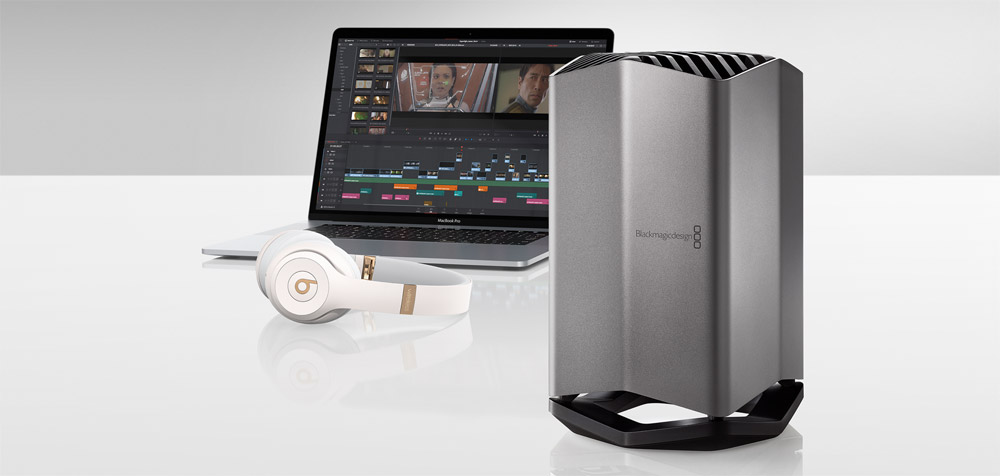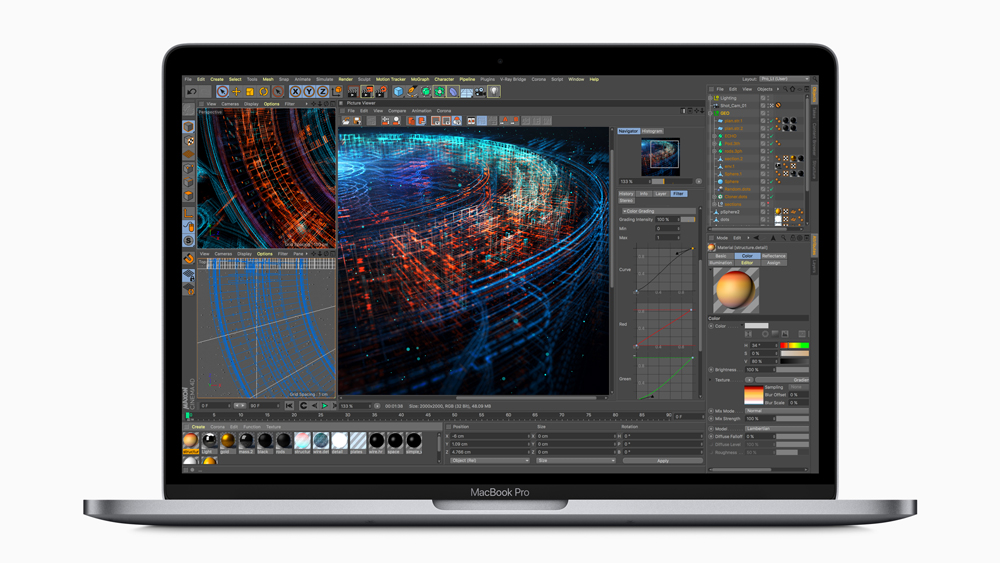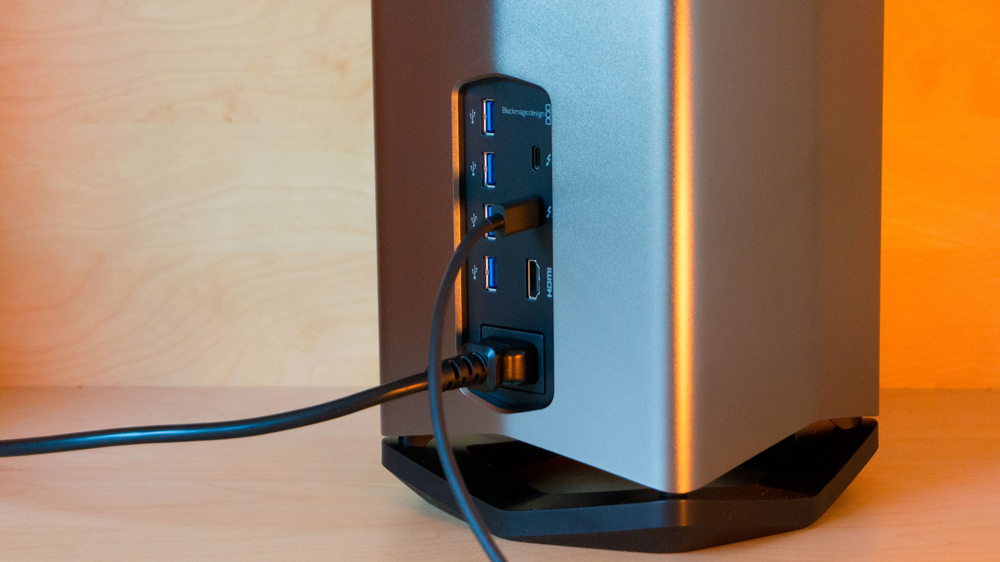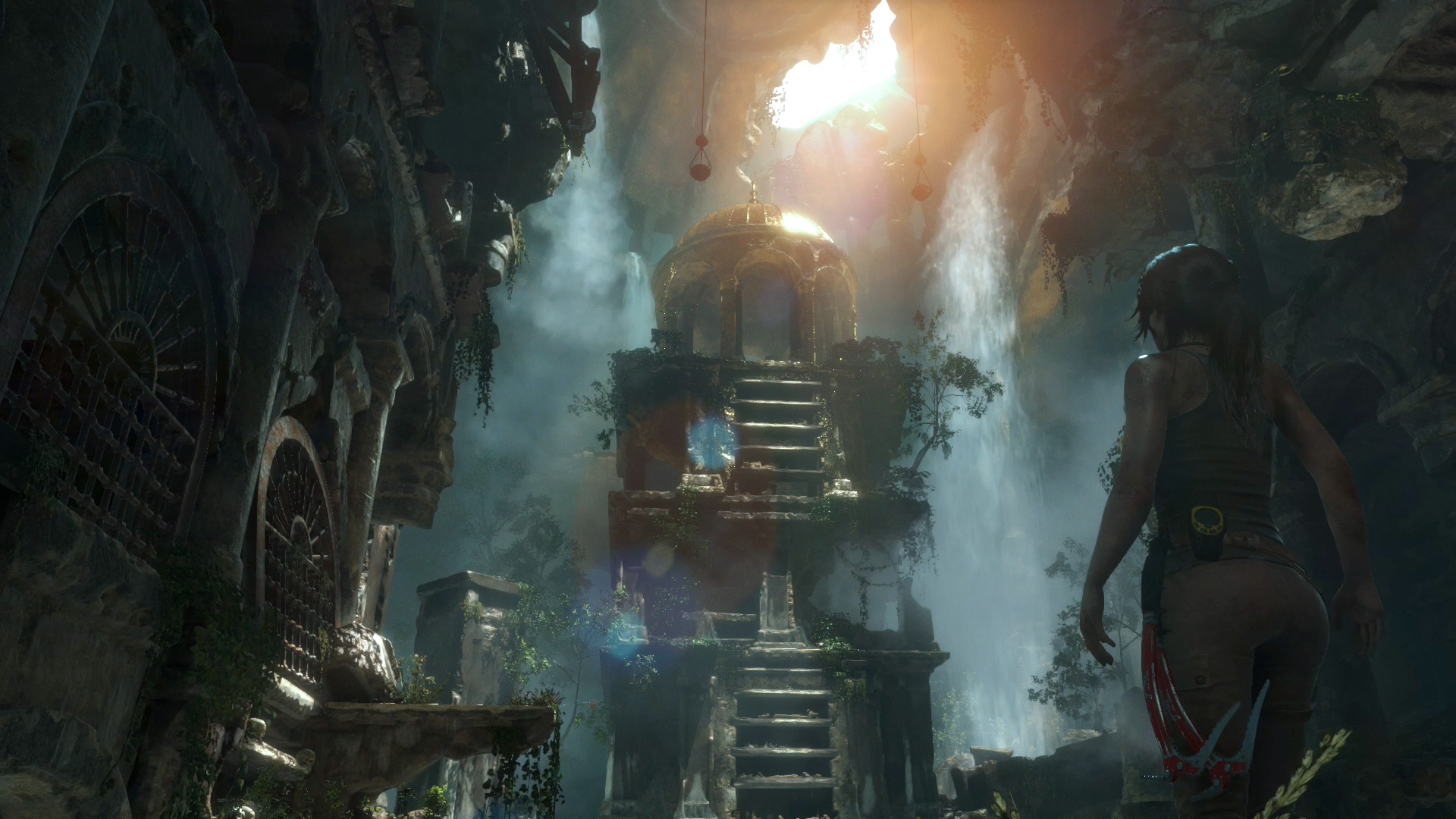External Graphics Card For Macbook Pro Retina
Our Verdict
As it stands, it may be that the apps you depend on can't access the eGPU's power, but the potential here is huge, and at a purely hardware level, this is a wonderfully capable, flexible set-up.
For
- Delivers portability and power
- Fast and capable
Against
- Apps likely need to be tweaked to be able to access the eGPU's power
- A significant investment
Creative Bloq Verdict
As it stands, it may be that the apps you depend on can't access the eGPU's power, but the potential here is huge, and at a purely hardware level, this is a wonderfully capable, flexible set-up.
Pros
- + Delivers portability and power
- + Fast and capable
Cons
- - Apps likely need to be tweaked to be able to access the eGPU's power
- - A significant investment
Portability or power? For decades, we've been wrestling with the same problem: portable computers can't be powerful, and powerful computers can't be portable. Well, the MacBook Pro (13-inch, mid 2018) is one attempt at squaring that circle: a small, light, slim computer for use on the road or in 'third spaces' such as coffee shops, which you can pair with an external graphics card (eGPU) to dramatically boost its power when you're at your desk.
Jump straight to...
- Blackmagic eGPU review
- MacBook Pro 13-inch (mid 2018) review
- Best laptops for graphic design in 2018
And as you'll discover as you read this review, the new MacBook Pro and Blackmagic eGPU broadly deliver on that promise: it's okay to be excited about this, even though there are caveats.
First, to be clear, these are two separate new products from two different companies (even if Apple did collaborate with Blackmagic Design on the eGPU), and you can buy one without the other. We're reviewing them together here, because we think the pairing is interesting and compelling.
Blackmagic eGPU review

The 13-inch MacBook Pro, we'll get to, but it's worth starting with a quick bit of background on eGPUs in general. Historically, the graphics card inside your computer simply drove the display; it worked out what to show, and passed that to the monitor.
- The best 4K monitors for designers
Broadly, there are two types of graphics card: 'discrete', which are their own self-contained mini-computers, and tend to be both powerful and power-hungry (impacting battery life in laptops); and 'integrated', which draw less power (and so are better for battery life in laptops) but are less powerful.
Blackmagic eGPU specs
OS: macOS 10.13.6 High Sierra or later
GPU: Radeon Pro 580
Video memory: 8 GB
Compute units: 36
Ports: 2x Thunderbolt 3 (USB-C), 4x USB, 1x HDMI
Stream processors: 2304
Raster Operation Pipelines: 32
Memory Clock: 1693 MHz
Memory Bus Width: 256-bit
Memory Bandwidth: 217 GB/s
You might quickly surmise, then, that a good solution would be to use an integrated graphics card on a laptop and plug in a discrete graphics card when you need more power. But while this has been possible on Windows for years, it was only with a recent update to macOS High Sierra that Apple supported it.
eGPUs are great, then, because since they're not constrained by the same power and temperature restrictions as inside a laptop, they can be hulking great monsters. This can be inelegant, though; traditionally, you got an eGPU setup by buying an empty case, then buying a graphics card to fit inside it. Because the chassis doesn't know what you'll put in it, it has to default to the 'worst-case scenario' in terms of heat, power and size, which can lead to needless noise and power draw as it tries to vent.
The Blackmagic Design eGPU, by contrast, is engineered around a specific card, a powerful Radeon Pro 580, so it can be smaller, quieter and more elegantly engineered. There are downsides, though: the card is fixed, and can't be upgraded; it's basically the Mac vs PC argument writ small.
There's one other major thing you need to know about eGPUs, too. While the operating system now supports it, this doesn't mean apps can actually access its power. Currently, the state of support for eGPUs is messy and ad-hoc. More on this later, but let's start on familiar ground with the MacBook Pro...
MacBook Pro 13-inch (2018) review
Apple's laptop line had languished for longer than many were happy with, and while the older versions that don't have the dynamic Touch Bar above the keyboard remain un-updated, both the 13- and 15-inch Touch Bar models are updated to be more powerful now. We're focussing on the 13-inch here, but it's worth saying that the 15-inch MacBook Pro (mid 2018) models get 6-core processors, a doubling of the max SSD size to 4TB, and, thanks to a switch to DDR4 RAM, a higher RAM ceiling of 32GB.
With the 13-inch, though, we're talking a 2.3GHz eighth-gen Intel Core i5 (with Turbo Boost up to 3.8GHz), or a 2.7GHz eighth-gen Intel Core i7 with Turbo Boost up to 4.5GHz. We're reviewing the latter; the £270 upgrade is worth it for creative pros. The base config is 8GB RAM, though our review model is maxed out to 16GB (£180+); 256GB SSD is standard, though ours has had a whopping £1,400 extra spent on it to take the capacity to its max of 2TB. Graphics card is a Intel Iris Plus Graphics 655, and this can't be changed.
MacBook Pro 13-inch (2018): power

Performance is generally very strong, even if you don't make allowances for this being the 'baby' laptop. It's responsive (in part thanks to the ridiculously fast, circa-3GB/sec SSD), and with eight virtual cores, it didn't creak with anything we threw at it.
Of course, where the performance trade-off is most obvious is with exports and renders, but even there, it actually has nothing to be ashamed of; a 4:10 4K project in Final Cut Pro with effects, colour grading, titles and more exported using the Apple Devices 4K preset in 4:44, a little over real time.
It gets hot and noisy when under load, though, and, compared to the iMac Pro, its thermal recovery – how quickly the fans can die down after heat has been generated – is much poorer. This is part of that power/portability trade-off.
13-inch MacBook Pro (2018) specs
CPU: 2.3GHz Intel Core i5
Graphics: Intel Iris Plus Graphics 640
RAM: 8GB (2133MHz LPDDR3)
Screen: 13.3-inch, 2,560 x 1,600 Retina display (backlit LED, IPS, 500 nits brightness, wide color P3 gamut)
Storage: 128GB SSD
Ports: 2x Thunderbolt 3 (USB-C), 3.5mm headphone jack
Connectivity: 802.11ac Wi-F, Bluetooth 5.0
Camera: 720p FaceTime HD webcam
Weight: 3.02 pounds (1.83kg)
Size: 11.97 x 8.36 x 0.59 inches (30.41 x 21.24 x 1.49cm; W x D x H)
There are other improvements away from raw specs too. New to Apple's laptop line is the T2 chip, its custom silicon controlling the system. This might sound esoteric, but it's in part responsible for that SSD speed, and it dramatically improves the security of the system, with, for example, hardware-level encryption and tougher barriers to circumventing security policies.
MacBook Pro 2018: features
We also welcome True Tone to the Mac for the first time, a system that debuted on iOS for reading the ambient light around you and adjusting the display's temperature to blend in. While this might strike you as the last thing creative pros working in colour-critical applications might want, note first that it can be turned off, and second that, actually, you probably don't want to.
Unless you have a proper process of regularly calibrating your display and creating/sharing profiles – and that's part of a chain all the way from clients to output – then colour is always going to be a bit of a crapshoot. And honestly, allowing the display to blend with the ambient light temperature in your broader field of vision throughout the day instead of forcing it to stay fixed is likely to deliver an overall truer colour into your brain.
Your mind does constant adjustments itself, analogous to True Tone in a way, and it's probably wise to go with the flow. In short: True Tone looks natural, and you should try it. (It won't affect external displays, except for the Apple Thunderbolt Display and LG UltraFine 4K and 5K Displays.)

Some folks hate the Touch Bar – a dynamic, long touch screen that replaces the function keys – and in particular the absence of a physical escape key, but try it before you swallow this received wisdom. Apps need to support it – most significant developers do, by now – but the constantly changing, context-sensitive way it puts controls at your fingertips can be, if you rewire your muscle memory, a significant productivity boost. The Touch ID button sits to the right, allowing for Apple Pay and unlocking – though if you have an Apple Watch and let it unlock the MacBook Pro, it's done pretty much by the time the lid is open.
The keyboard has been tweaked. It's still the ultra low-travel butterfly mechanism, which takes a little getting used to, but there's now a thin membrane under each key. Officially, Apple tells us this is to make it quieter – it feels like it succeeded in that – but it's as likely to be related to widespread reports of failures with the previous generation keyboard, thought to be caused by debris getting under the keys.
There are four USB-C-style Thunderbolt 3 ports, two on each side. And while you might take umbrage at having to dongle-up to do something as simple as plugging in a USB stick, they do offer some welcome flexibility (being able to plug power into either side, say), not least because unlike the previous generation MacBook Pro, all four ports are full speed.
MacBook Pro with Blackmagic ePU
Besides, one of the handy thing about the Blackmagic Design eGPU is that it doesn't just house a graphics card – it also acts as a dock. There is one additional Thunderbolt 3 port (supporting the LG UltraFine 5K, and likely Apple's upcoming display), an HDMI 2.0 port for UHD and 4K DCI at 60fps and four USB 3.1 port.

Plug it in, therefore, and you could be hooking up storage, peripherals, displays and more with one cable, and it also charges your MacBook Pro. The only significant omission is networking; it would be nice to have had a Gigabit or faster Ethernet jack there too. As it is, you'll have to buy a USB to Ethernet adapter if you want a wired connection.
It's big, too, though designed with some flair; it looks good on a desk, and though it makes an impact visually, there's little aural impact. Even left running overnight at 80%-plus load, the fan was nothing more than a soft hum, and would be inaudible in a working studio. It also barely got warm; impressive.
But the eGPU computational boost is key, and it's not a simple answer. While some power gains can come free, apps really have to be adapted to be able to tap into the full power of the eGPU, and in any case, a graphics card is only used for certain types of task, with the main CPU doing most of the grunt work. We need to remember, too, that though Thunderbolt 3 is fast, at 40Gb/sec, it's slower than internal interconnects.
Faster framerate
One area where it's easy to see gains is in the traditional job of GPUs: displaying stuff on a screen. If, for example, we run Rise of the Tomb Raider: 20 Year Celebration at 1920x1200 on the internal display using the Iris Plus integrated graphics, we get a frame rate of 6.76fps on the Very High preset.
These numbers are emblematic of the dramatic improvements an eGPU can add, say, for previewing VR content hooked up to the HDMI port.
If we plug a 1080p display into the HDMI port on the eGPU and use the same quality preset (albeit driving 10 per cent fewer pixels), this jumps to over 50fps. Indeed, if we turn everything to the maximum we can, we only drop a little below 47fps.
Few people will buy an eGPU just to run games – especially since this Tomb Raider title is one of the few that explicitly supports it – but these numbers are emblematic of the dramatic improvements an eGPU can add, say, for previewing VR content hooked up to the HDMI port. However, its more general effect on pro apps is harder to measure.
Benchmarking
eGPUs on the Mac can accelerate apps that use Metal, OpenGL, and OpenCL, and we can get a sense of this using synthetic benchmarking apps such as LuxMark and Cinebench. For LuxMark, which tests OpenCL performance, rendering the LuxBall with the MacBook's own internal GPU scored 2,693, and that score more than quintupled to 13,685 with the eGPU.
The gains were much less dramatic in Cinebench, which is measuring OpenGL. The internal GPU scored 33.7, and the external seemed to give different result depending on whether the window was on the internal display or a display connected to the HDMI port on the eGPU; 60.2 and 75.4 respectively.
Unigine's benchmarking tool – especially useful for getting an idea of performance in VR authoring environments – gave 8.6fps (scoring 358) on the internal GPU/screen, rising dramatically to 35.1fps (1468 score) on an external display connected to the eGPU's HDMI port.

Going further, and trying to get genuine benchmarks for real world use in pro apps, it gets messier. You might think Apple's flagship pro app, Final Cut Pro, would take good advantage. But even though we can see in Activity Monitor that both the internal and external Blackmagic eGPU are being used in exporting, albeit not at full capacity, the difference in our test export wasn't dramatic; 4:38 versus 4:44 without the eGPU.
There is a little script that can force apps to use the eGPU even if they don't officially support it, called set-eGPU; but it made no appreciable difference to the final FCP export time. These exports, though, were all running from clips that have been pre-rendered, and actually, we did see a speed-up in the time to generate these background render files in this scenario; 9:24 with the eGPU forced, down from 15:36 without it.
It's worth saying that, of course, this eGPU solution from Blackmagic works very well with its own colour grading, FX and editing tool, DaVinci Resolve. We weren't able to test it, but Blackmagic claims speedups of 4× to 7× depending on task, and indeed you could likely boost any improvements further, since in theory you could connect up to three of these eGPUs to the MacBook Pro at once. Note, mind you, that they're not supported at all in Boot Camp.
MacBook Pro and Blackmagic eGPU: verdict
Ultimately, we love this pairing, at least in theory. The Mac is decently powerful in its own right, and small, slim and light enough to get work done in awkward spaces; sometimes it's not practical to work on a desktop, though that will still give you the absolutely best power possible if you need it. The addition of a meaty external graphics card is wonderful here, so long as the apps you're using support it, but at the moment, that picture is just too fuzzy.
If you're thinking of buying, look at the bottlenecks in your workflow, and try to ascertain if they can be sped up with an eGPU. Talk to whoever makes the tools you rely on to find out their roadmaps before you commit, and remember that an eGPU on the Mac can accelerate apps that use Metal, OpenGL, and OpenCL. Badger folks till you get an answer, because the potential here is huge.
Also read:8 must-have products for a smarter studio
MacBook Pro (13-inch, 2018) and Blackmagic eGPU review
As it stands, it may be that the apps you depend on can't access the eGPU's power, but the potential here is huge, and at a purely hardware level, this is a wonderfully capable, flexible set-up.
Christopher Phin writes about retro Apple tech for Macworld, typography and design for Creative Bloq, and about pretty much anything else if someone pays him.
External Graphics Card For Macbook Pro Retina
Source: https://www.creativebloq.com/reviews/macbook-pro-13-inch-mid-2018-and-blackmagic-egpu-review
Posted by: wilsonexte1947.blogspot.com

0 Response to "External Graphics Card For Macbook Pro Retina"
Post a Comment